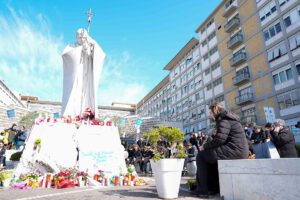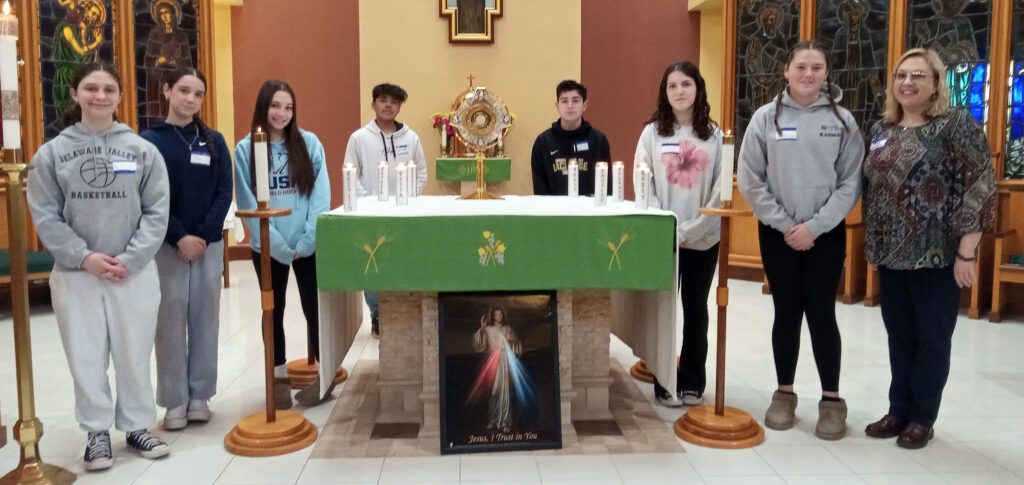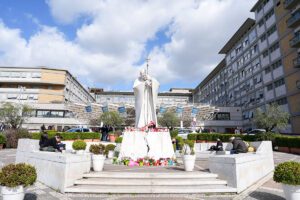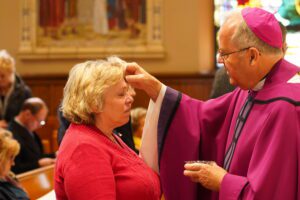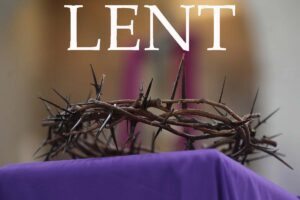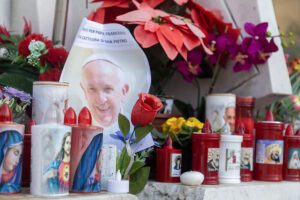PARIS (OSV News) – A mere three months after Notre Dame Cathedral reopened, some Catholics in France worry the massive influx of tourists has overshadowed its religious essence.
But the auxiliary bishop of Paris told OSV News it’s the opposite — with a large flow of people, more strangers are exposed to the Catholic faith, with their hearts touched by God’s presence in renovated interiors.
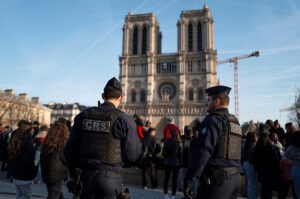
With 29,000 visitors a day, up from 23,500 a day before the fire in 2019, Notre Dame’s guest rates are comparable to those of the Louvre Museum, even though the museum’s surface area is considerably larger.
Auxiliary Bishop Emmanuel Tois of Paris, whose office is just about 60 feet from the cathedral, told OSV News that the number of tourists flooding the cathedral doesn’t bother him. It’s a chance to meet the Lord, he said.
Bishop Tois said that the rector and chaplains of Notre Dame often circulate among the visitors in the aisles of the cathedral. “And they are regularly approached by people who ask for explanations, and who sometimes explicitly ask them how they can be baptized.”
Bishop Tois often celebrates Mass at Notre Dame himself, and regularly goes there on Saturday mornings to hear confessions.
“People come to me for confession even if they had not thought of it when they walked in,” he recounted. “Some tell me it is the first time they have been to confession in 40 years! Others are not baptized and know nothing about faith. But they come and sit next to me and ask me lots of questions,” he said of the conversion power of the place.
“They have come to visit a historic place, which had to be seen, given its notoriety. But in the course of the visit, they are surprised by metaphysical questions that sometimes touch explicitly on faith,” Bishop Tois said.
When asked about criticism by Alain-Marc Plasman in the French Catholic paper La Croix that the cathedral “locked in its status as a monument … loses its primary function,” Bishop Tois said that “Notre Dame has been offering visitors works that speak of God for 900 years, and that intrigues them.”
He explained that “visits do not stop during Masses and liturgical services. Visitors are interested in what is going on. They are respectful. They lower their voices and watch. They see that this heritage has been handed down and is still alive today. Many are impressed.”
“The cathedral is always full, whatever the time, and it is true that when you enter it, you can be surprised by the noise and tourist bustle there,” Bishop Tois told OSV News. “It is also true that many visitors are moved by the aesthetic beauty of the cathedral, just as one might be when visiting a fine museum.”
For Mathieu Lours, too, the “historical density” of Notre Dame, which attracts the crowds, is not in contradiction with its religious life.
“As for the crowd of visitors who pass through the doors of the cathedral, how does their presence interfere with the spiritual life of the building?” the architecture historian asked in La Croix.
“Its openness to all is rather a guarantee of its vitality,” Lours wrote. “How could a cathedral, in today’s world, be a place of conversion if it only attracts the convinced? Crowds are the hallmark of great sanctuaries. And the Church must take up the challenge of maintaining, despite everything, the dignity that is due to them.”
He also pointed out that the cathedral is a witness to the living faith with the Blessed Sacrament that “has found its place within a tabernacle placed on the high altar. Every visitor, every faithful now understands — or at least has the intuition — that the centre of the cathedral is this inaccessible space … It is the very definition of the sacred that he experiences here.”
Bishop Tois agreed. “From the outset, the Archdiocese of Paris has endeavored to welcome both pilgrims — who know they are pilgrims — and other visitors,” he told OSV News.
“That’s why we don’t charge admission to the cathedral. We must not separate pilgrims from other visitors. People enter Notre Dame with many different approaches. There are those who have a very lively faith, and those who are conscious of not having faith,” he said.
“But between the two, there is a whole margin of people who are neither on one side nor the other, and who, moreover, do not want to be lumped into one side or the other. But they are receptive when they enter the cathedral, and can open up to an unexpected encounter.”
He concluded: “Many are likely to let themselves be touched by a visit to Notre Dame, even if they first entered it simply as tourists. I am a witness to that.”

